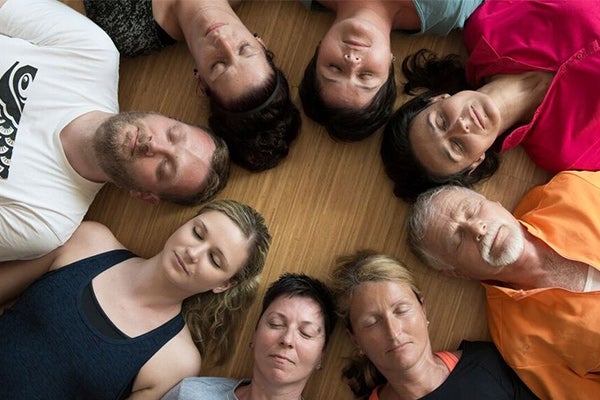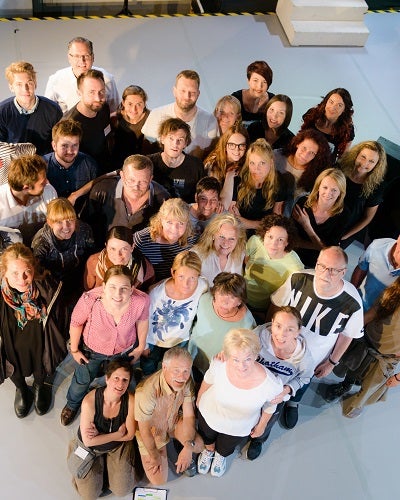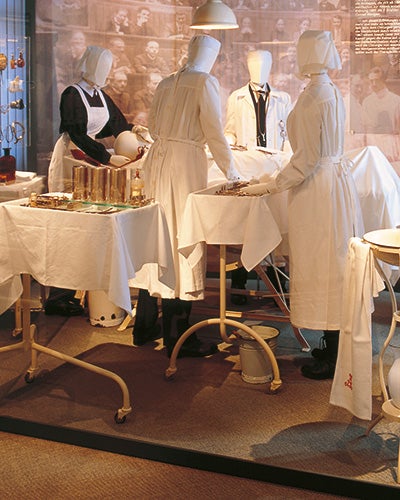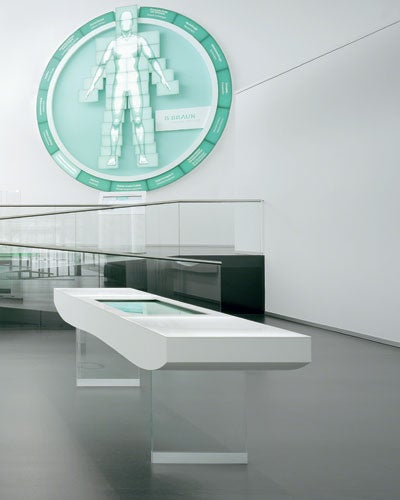"Move your body" – an extraordinary dance project
Created for the 150th anniversary of the B. Braun surgical division Aesculap
Dancing is the joy of movement and simultaneous encountering of others. This is the fundamental concept of the "Move your body" dance project, created for the 150th anniversary of the B. Braun surgical division Aesculap. Created from the desire to design an extraordinary image film, a special kind of community dance project developed. At its center stand the people who are emotionally the most closely connected to the company and its products: employees and patients. The former work every day to produce high quality and innovative medical products; medical technology enables the latter to lead a comfortable life free of symptoms. Filmmakers Lukas Kretschmer and Tobias Haase are responsible for the artistic direction. In the following interview, together with the Aesculap Project Manager Christian Praedel, they describe the surprises, opportunities and challenges associated with such a project.
You are currently rehearsing the dance choreography in a two-week training phase together with the participants, none of whom are professionals and some having undergone surgery just recently. In early July, you will then appear on stage in Tuttlingen, in front of many audience members. A special kind of dance project, and also the basis for an image film: how does one arrive at such a project?
Tobias Haase: Our idea was to bring people together in a different way that normally doesn't occur. In this case, communication goes beyond talking, and that was precisely our approach. We are creating a framework in which body and movement play a very important role and then allowing whatever happens to occur. The point of the exceptional is also important, reaching one's limits and finding out how far one can go.
Lukas Kretschmer: In addition to the fundamental requirement of this project, worded as "anything but white coats," Aesculap is also characterized in that constant development and improvement is made reality. A special form comes into play there, namely the experiment: venturing something, risking something, trying something out – without knowing how the result will look. That naturally also applies for the individual patients.
Have you created such unusual projects before?
Tobias Haase: Lukas and I are the authors of the project. We have both participated in community dance projects, Lukas as a dancer, myself as a filmmaker. This time, we are expanding the project by letting patients participate. What we have seen from our previous experiences is that people can grow beyond their limits and are very proud of such a project. That is also what we would like to achieve. That's why we have created a framework in which all of that can take place. There is a stage, a rehearsal room, choreographers, dancers, and the music is also a very important subject. We have our own composer who will compose the music on location.
That sounds like a very open concept. Can that work with "laypeople?"
Lukas Kretschmer: Of course, you don't go into a project with a polished play; instead, you let it develop itself. That is naturally advantageous, because we also have participants who of course shall not meet the specifications of professional dancers. They also have to find their way into the project; that is the basic principle of the whole community dance affair. It is based on the conviction that everyone can dance! This is not an athletic competition, but rather the opportunity to express something with your body and personality.
Christian Praedel: For me, the fascinating thing is that we have no actors reading a text, but rather it's the patients and employees who experience something in these rehearsals and express their feelings and experiences.
Was it difficult to find participants among the employees and patients? And how were you able to make the rehearsals a reality?
Tobias Haase: There are always doubters of things that go farther than what people have done before; you have to work on convincing people. But the Aesculap employees in particular were on board from the beginning, and were even cast due to their great interest. The colleagues had to invest free time or take vacation days; in that respect, it's great that people accept a disadvantage in order to join the project.
Lukas Kretschmer: On the patient side, the search was more difficult, particularly due to the time required. The project runs full time and we are tearing people away from their routine for two weeks. Still, we are very happy to have found 24 participants who are taking this journey with us.
With this reality experiment, you are bringing people together who are transcending boundaries together and creating something entirely new. What role does medical technology play in this?
Lukas Kretschmer: I would call it the products "becoming invisible." Medical technology should dovetail seamlessly into life; hip joints, a knee joint or sutures are products that always function reliably. The project enables personal communication between employees and patients, outside of the context of medical technology: it suddenly becomes apparent how someone is doing after surgery or what happens if movements are still unstable or pain occurs. So it is also about exchanging views and finding a way to handle this experiences.
Christian Praedel: We were able to speak with one participant before his surgery. He was afraid of the intervention, but said that with the project ahead, he was almost looking forward to it. I find it fascinating which positive effects such a project can have. It is even possible to alleviate fear of surgery.




